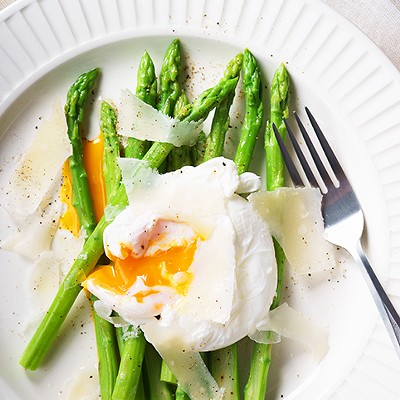Lush lawns covered with wildflowers are a lovely excuse to delay pulling out the mower. Amethyst-hued carpets of violets dotted with sunny dandelions not only provide food for pollinators and encourage biodiversity, but they can also brighten your bakes and add whimsy to supper. These early edible wildflowers will soon be followed by other tasty florals including roses, lavender, calendula, bachelor buttons, nasturtiums, sunflowers and marigolds. Whether sweet or savory, there's lots of ways to bring flower power into your kitchen.
Even folks with limited decorating skills can create stunning cakes and boards with the help of cheerful blossoms. For cakes, it helps to leave a bit of stem attached to stick into the cake and hold it in place. Wait to decorate the cake until just before serving and avoid sticking the petals onto the frosting to help keep the flowers looking as fresh as possible.
Those looking to up their flower decoration game can try their hand at making candied flowers. Beat one egg white well with a teaspoon of water. Use a pasteurized egg white if concerned about eating raw eggs. Pour the egg white through a fine meshed sieve to remove any jelly-like bits of albumen. Hold the flower with tweezers and use a small, clean paintbrush to paint the egg white onto each petal, starting with the back of the petals then turning them over to paint the front. Coat the flower completely but lightly. Hold the flower over a bowl and sprinkle on all sides with superfine sugar. Shake gently, then sprinkle again and shake once more before placing the flower on a piece of waxed paper to dry. Leave uncovered in a well-ventilated room for about 24 hours to dry completely, then store in an airtight container where they can keep for up to one year.
Flowers can also be added directly to your recipes, either by incorporating them into the dough or baking them onto the top. Spring herbs can add complex notes to both sweet and savory creations, either in a lightly sweetened polenta cake flavored with lemon and rosemary, or in these deceptively simple sage shortbreads. Violets and dandelion petals contribute a cheerful hue and delicate flavor to a sweet version that's perfect for gifting and a delightful pairing alongside a bubbly glass of Moscato d'Asti.
Wildflower shortbreads
1 ¼ cup powdered sugar
8 ounces (2 sticks) salted butter, at room temperature
1 large egg yolk (reserve the white)
½ teaspoon salt
2 teaspoons vanilla or elderflower liqueur such as St. Germain
½ cup dandelion petals (make sure there are no bits of bitter stem or leaf)
2 ¾ cup all-purpose flour
36-48 violets, pansies or other edible flowers
Combine the powdered sugar, butter, egg yolk, salt, vanilla and dandelion petals in the bowl of a mixer or food processor. Mix until light and fluffy then add flour and continue mixing gently to for a smooth dough.
Transfer the dough to a floured piece of parchment paper and roll into a log about 1 ½ inches thick. Wrap the dough in the parchment paper, twisting the ends like a piece of candy. Refrigerate for at least one hour and up to several days. The dough can also be frozen, wrapped well in plastic, for several months.
When ready to bake, preheat the oven to 350 degrees and line a baking sheet with parchment paper. Use a sharp serrated knife to slice the log into rounds approximately ¼-inch thick. Arrange the rounds of dough approximately ½-inch apart on the parchment lined baking sheet.
Beat the reserved egg white with a teaspoon of water. Press the flowers into the rounds of dough, then use a pastry brush to lightly coat each shortbread with the beaten egg white. Place in the preheated oven and bake for 15-18 minutes until lightly golden around the edges and the dough springs back pressed gently with a fingertip. Cool completely before serving.
White cheddar and sage shortbreads
8 ounces sharp white cheddar or parmesan, or a mixture, grated
4 ounces (one stick) salted butter
1 egg, separated
1 ½ cup all purpose flour
½ teaspoon salt
1 teaspoon freshly ground black pepper
36-48 small sage leaves (parsley, thyme and chive blossoms work well also)
Combine cheeses, butter, egg yolk, flour, salt and pepper in a bowl or food processor and mix thoroughly to combine into a rough ball. Transfer the dough to a floured piece of parchment paper and roll into a log about 1 ½ inches thick. Wrap the dough in the parchment paper, twisting the ends like a piece of candy. Refrigerate at least one hour and up to several days (dough can also be frozen, wrapped well in plastic, for several months).
When ready to bake, preheat the oven to 350 degrees and line a baking sheet with parchment paper. Use a sharp serrated knife to slice the log into rounds approximately ¼-inch thick. Arrange the rounds of dough approximately ½-inch apart on the parchment lined baking sheet.
Beat the reserved egg white with a teaspoon of water. Press the sage leaves into the rounds of dough, then use a pastry brush to lightly coat each shortbread with the beaten egg white. Place in the preheated oven and bake for 15-18 minutes until lightly golden around the edges and the dough springs back pressed gently with a fingertip. Cool completely before serving.




















